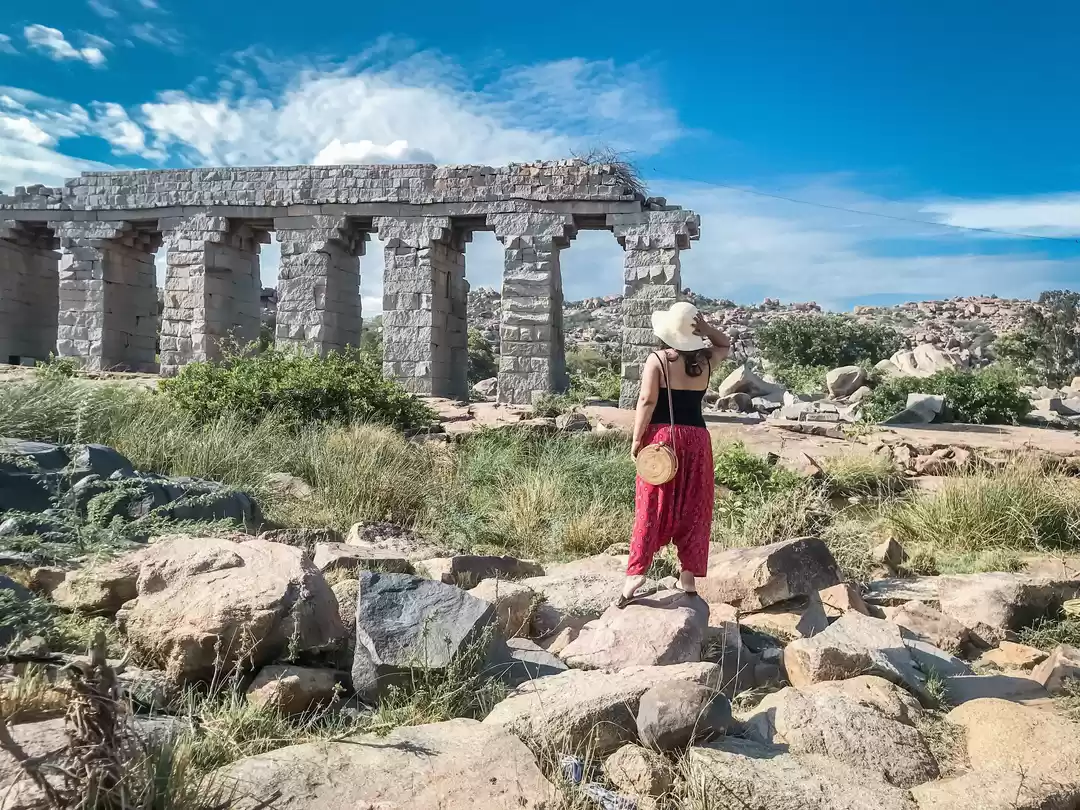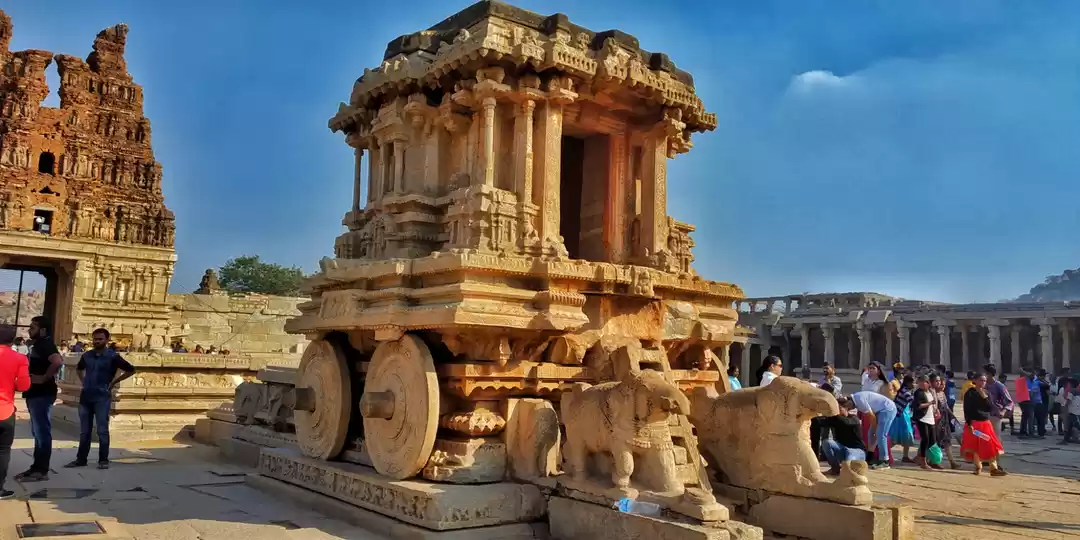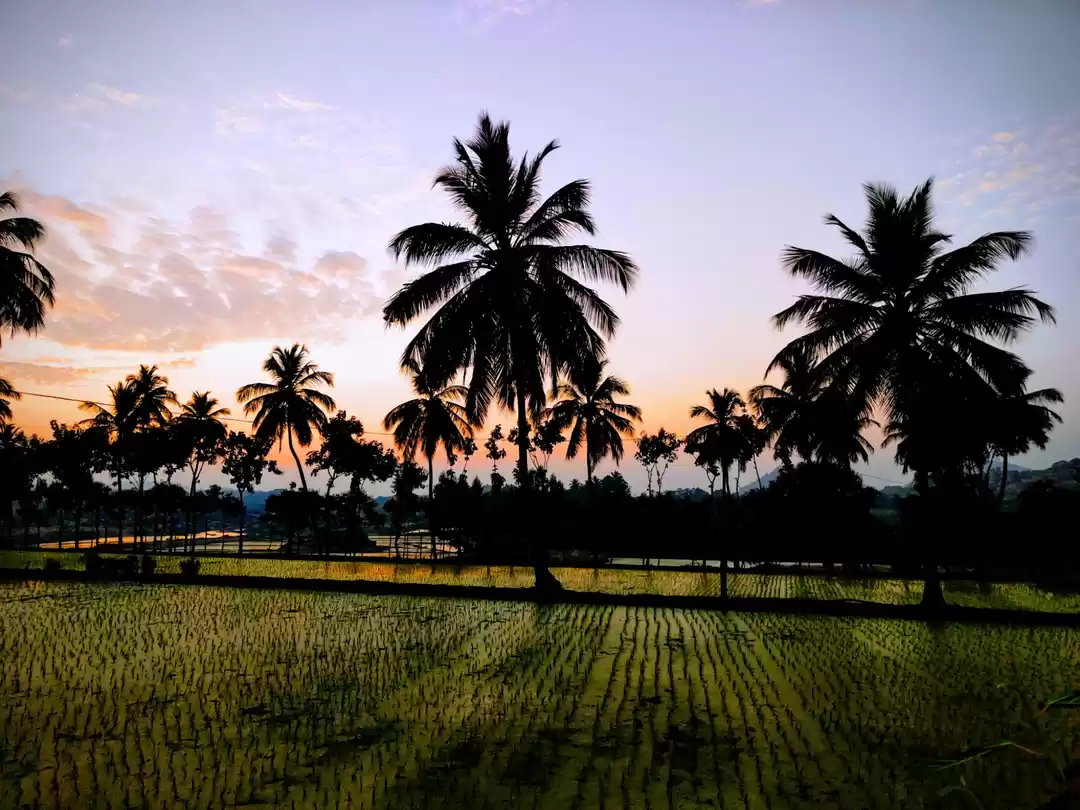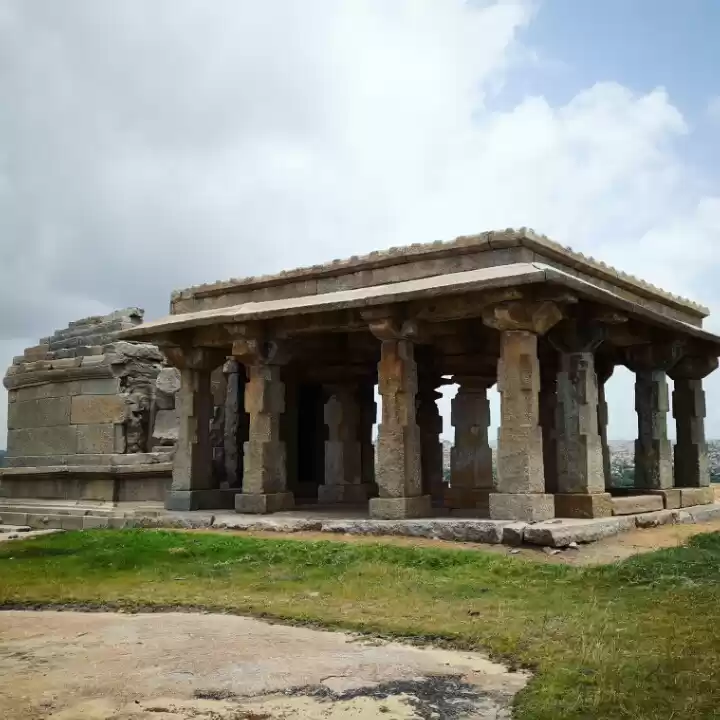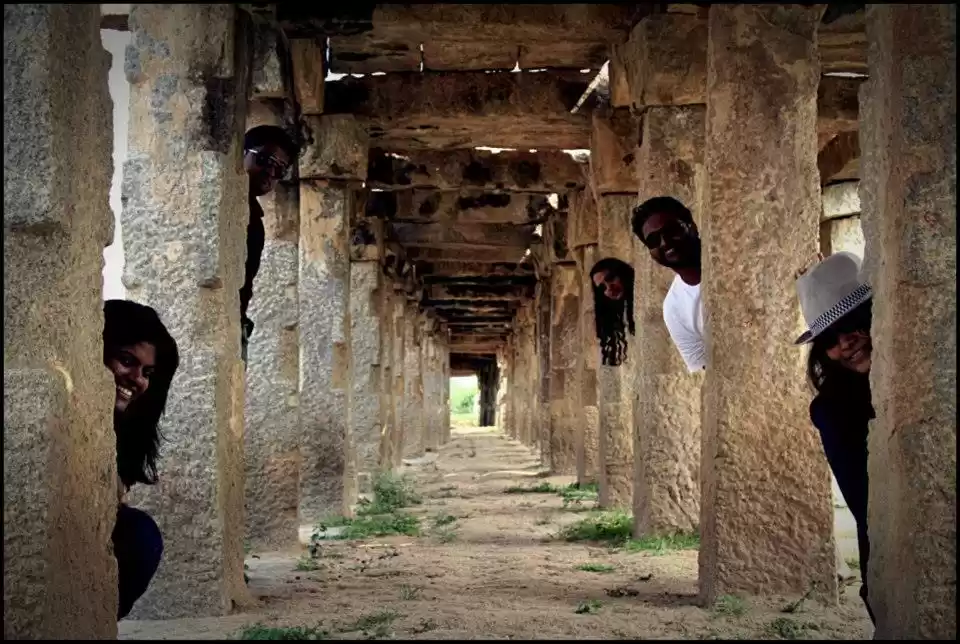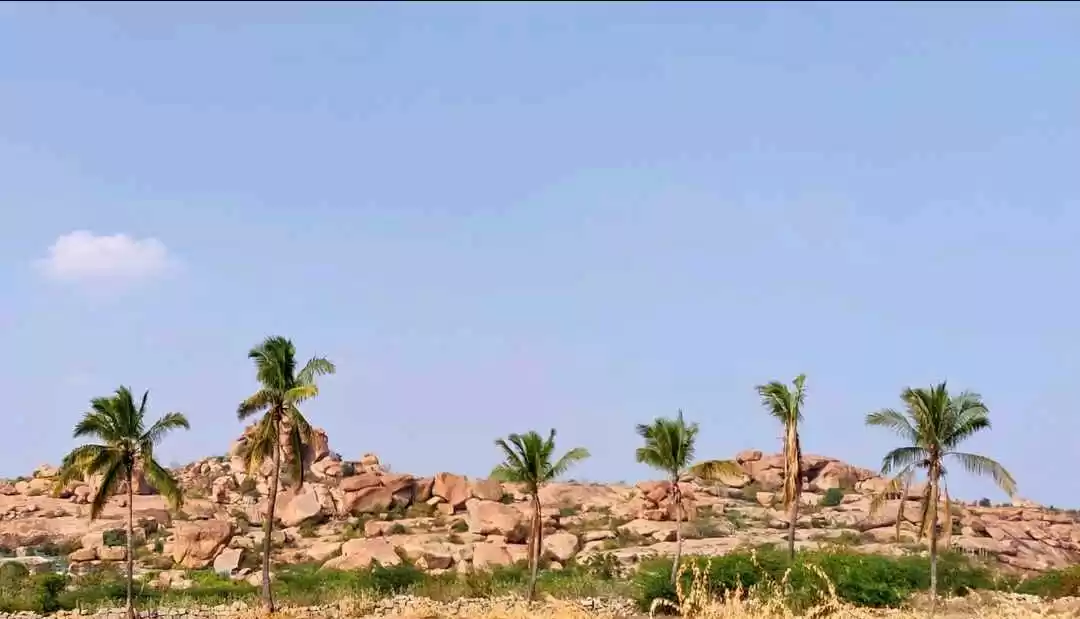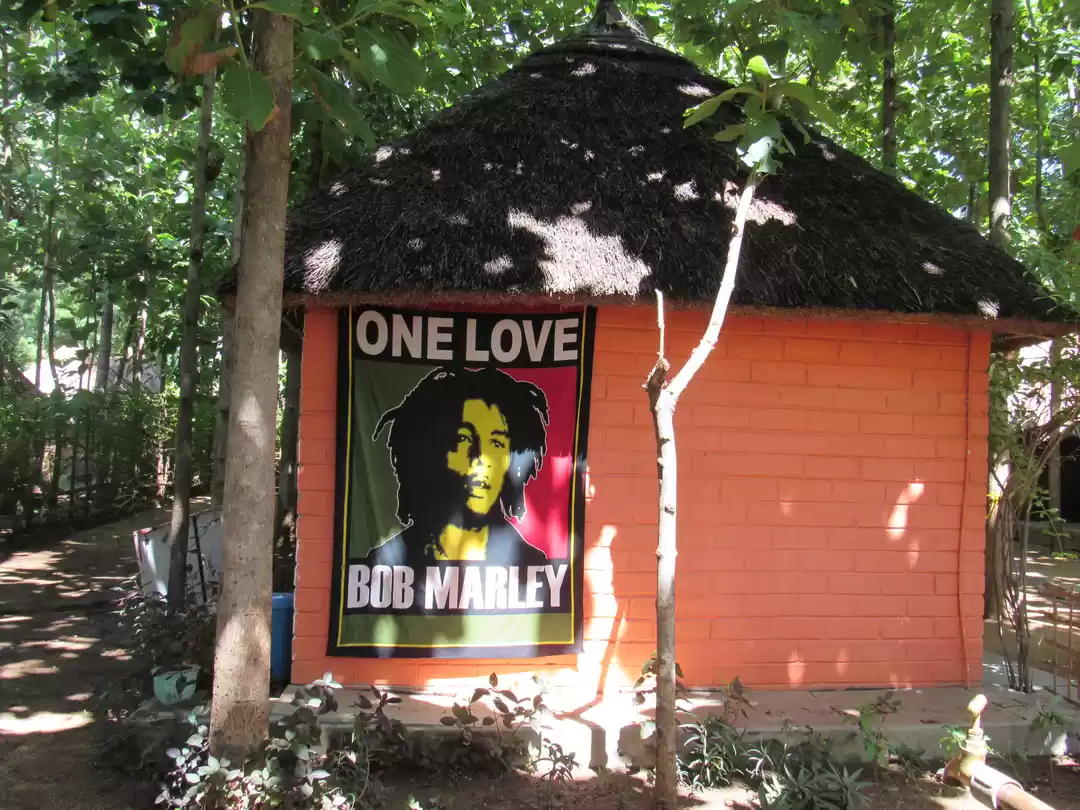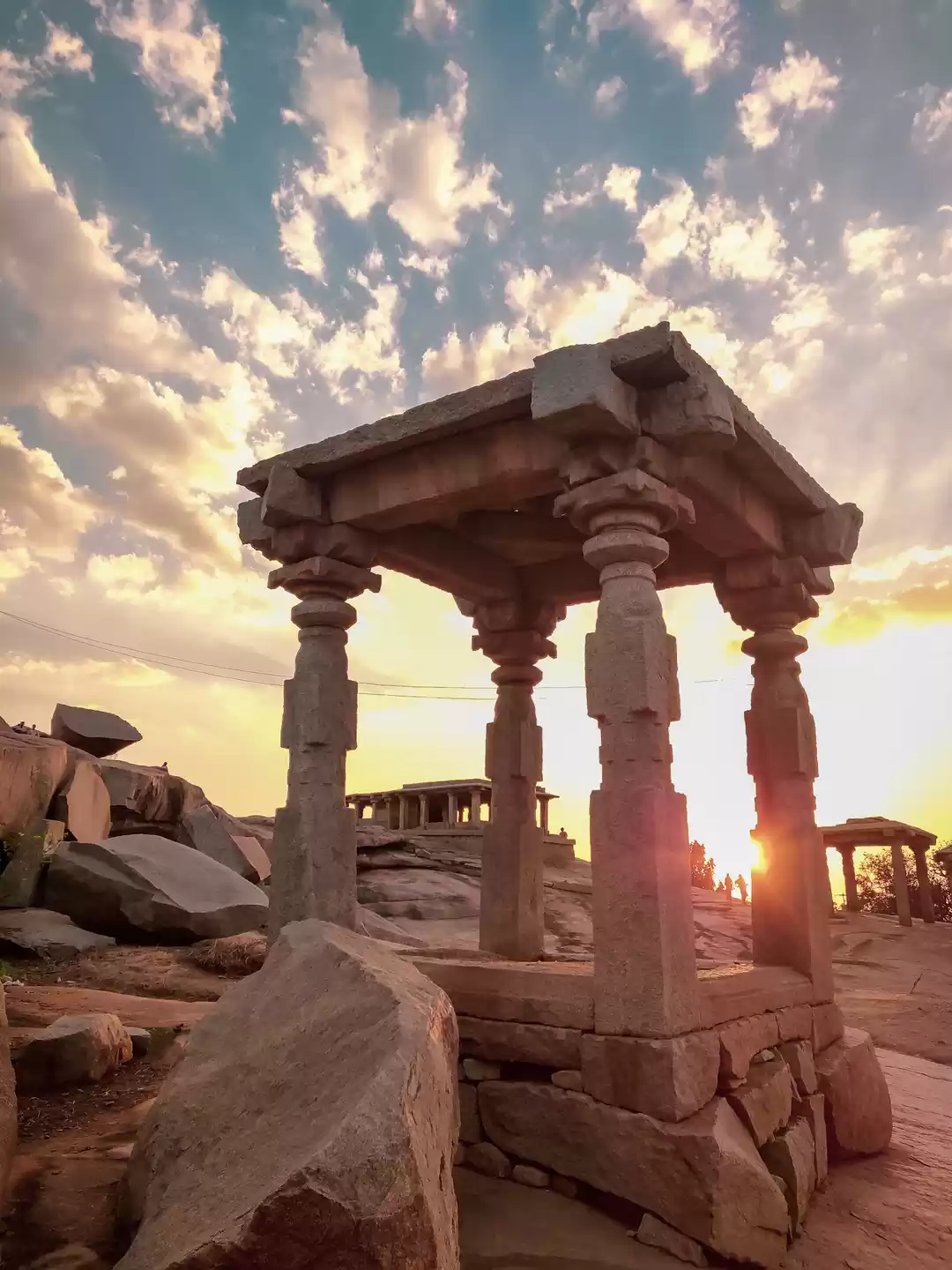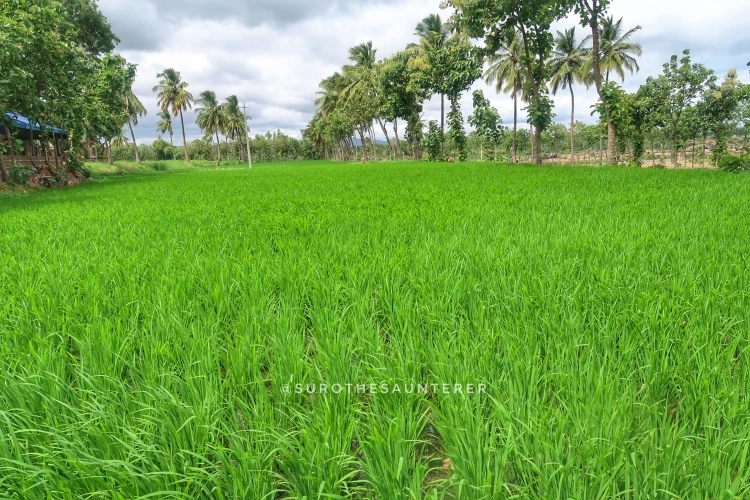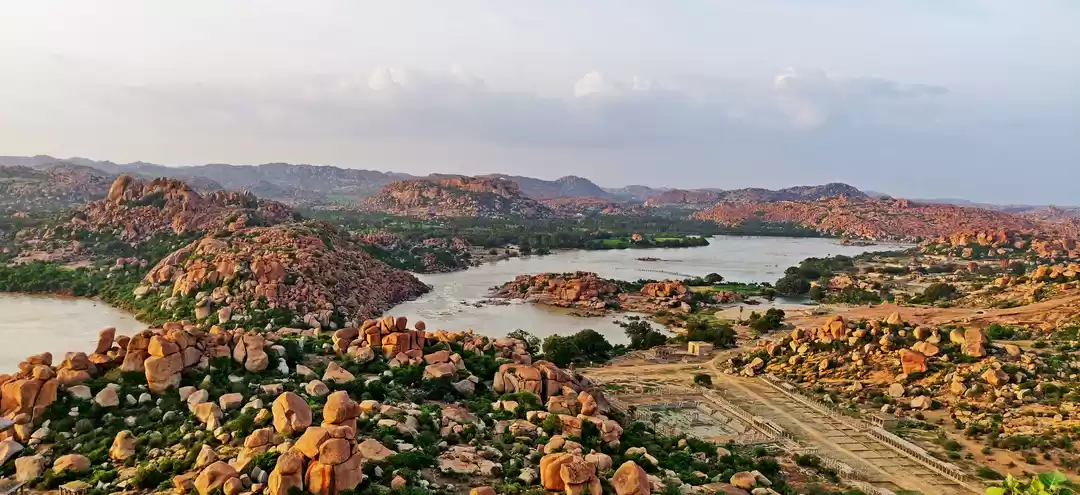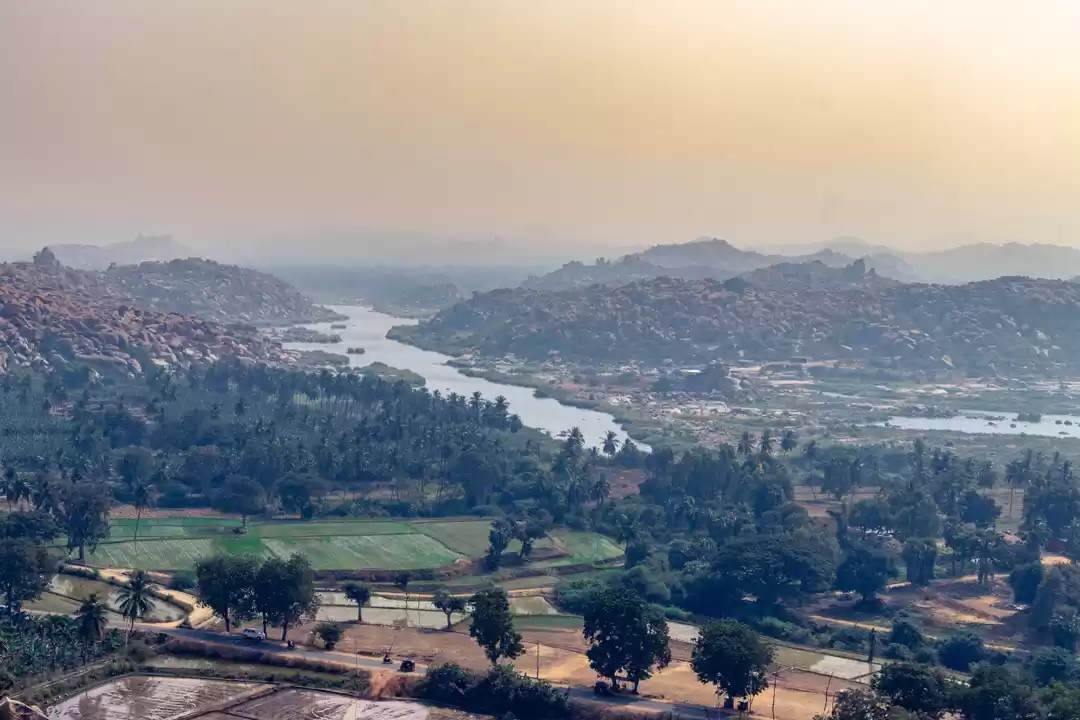
Imagine a tiny village if you will, surrounded by natural and historical beauty, towering over the village is a temple that has an uninterrupted history since the 7th Century. The surrounding area is extremely expansive serving as a natural fortress – giant boulders form mountains and walls throughout the city, filled in by lush green jungles and paddy fields, as far as the eye can see.
This is Hampi for me; small town, a temple village is recognized as a UNESCO World Heritage site. This is the reason that got me to Hampi. You see, have a bucket list wish to visit and experience all UNESCO World Heritage Sites. Even without the fascinating ruins, the natural beauty of this place is enough reason to make a trip to this place.
The melancholic beauty of the ruins called me twice, sadly both during extremely hot summer months. Note to everyone who is reading this: Do not visit Hampi in March/April. The ideal time to go would be October-February. Most of the journey was covered in a bus from Bombay to Hospet. Hospet is the closest city to Hampi, close to 12km away from it. You will get auto-rickshaws to Hampi.
As we started nearing Hampi, Centuries looked down upon us. Being amidst Centuries of stories, of ideas, of people that weren’t but their work that was still around. This was overwhelming. The rickshaw-wala dropped us at the town, on the banks of the beautiful Tungabhadra river, where we had to lug our backpacks into the ferry and go across the river.
Both the times in Hampi, we stayed at Mowgli Guest House in a small hut overlooking the beautiful paddy fields. Many a sunsets were seen lounging here, drinking ‘lemon ginger honey’ and soaking the sunset sky in.

They say there are over 70 sites that you can visit in Hampi, and the first time around we covered close to half of this. We took bicycles at INR100 a day and explored the Queen’s Bath, Virupaksha Temple, Vithala Temple, Lotus Mahal, Elephant Stables. It was an exploratory of a few days, reading about the history, talking about it, making stories up when there were none. It was exactly the way I wanted to do Hampi the first time around. Hours together were spent on Anjaneya Hill, waiting for the sun to set, the sky turning colours from blazing orange to pearly pinks and finally into a dark blue, littered with tiny stars. I think, everywhere I have travelled to, Hampi has the best sky to offer.


The next morning (read: dawn), we climbed the highest point in Hampi, Matanga Hill. The view from the Veerbhadra temple on top is quite possibly one of the most beautiful I have seen in my life. Clouds floating like light peach feathers while the sun pushes itself out from behind the ruins. To witness this, waking up at 3am to start trekking at 4am was more than worth it.

The second time was chiller, the second time most of the days were spent on Hampi/Hippie Island (the other side of Tungabhadra). The time here was spent doing nothing. Most of the time was spent at the Laughing Buddha Café, eating, playing deal cards and reading. I finished two books within a week! It was time that I could afford to while away, sleeping on the mattresses in these shacks (they do not have chairs), without a care in the world.

This place has offered a lot to me. From adventure and awe the first time around to teaching me to enjoy doing nothing, to just being. Hampi, you will forever be the place that carved a place in my heart with your history, your kind people and the skin tan that I don’t believe is fully washed away even after two years!


